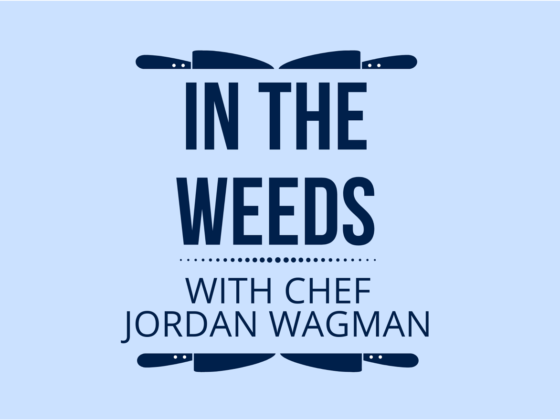food delivery
• • •
I’m a creature of habit.
Especially when it comes to grocery shopping. I drive to the same shops, walk the same isles, buy the same food, in the same order. I rarely stray from this itinerary. But I can’t possibly be the only person that does this – right ?!
Which is why I’m so grateful for my weekly delivery of produce.
Every Thursday, I arrive home to a closed container on my back porch. It’s filled with the most stunning, seasonal, and sometimes surprising fruits and vegetables! And as the seasons change, the contents inside my box change too. Now that it’s winter – I absolutely LOVE this time of year – I’m receiving loads of squash, root vegetables and different hearty greens like collard greens and kale. There’s so much variety and exploring different ingredients takes me out of my comfort zone and into new and exciting territory!
what the f#$% do i do with rutabaga?
For the last three weeks, my box has been filled with rutabaga. That’s right…RUTABAGA. It’s like a cross between a potato and jicama, and while I’ve worked in kitchens for over 25 years, I have still never cooked with it. Until now. With three deliveries worth of the stuff, I knew I had to figure out a use for it pretty darn quickly. So, I treated it like a potato; I peeled it, chopped it and roasted it in the oven, along with some chicken breasts. You know what?! It turned out awesome! New ingredient discovered and enjoyed. Who knew?!
As amazing as every item inside the box is, we have to be mindful of how we handle it outside. Which means, we have to properly care for our produce! If not treated properly, it will only last a couple of days and that does NOT work for my wallet. But if I take proper care of my produce, it can easily last a full week until the next delivery.
showing your produce the love
The moment I bring my delivery inside, I remove the plastic from everything. Herbs and greens are submerged in ice water (See Tips) to both rehydrate and clean them. Cilantro, for example, is extremely dirty so I will repeat the process two or three times until all of the dirt is removed and the water is clear of impurities. The herbs can sit in the water for just a few minutes or an hour if you’re busy doing other things. I then individually wrap all herbs in paper towel and store them in an air-tight container.
Lettuce like Romaine, Boston/ Bibb or mixed greens, are also cleaned, wrapped in paper towel and refrigerated. Lettuce is best cleaned by submerging it in a bowl of ice water vs. placing it in an empty bowl and then running the water on top. This can bruise the leaves and affect its shelf life. It’s also best not to chop the leaves, but to keep them whole until you’re ready to use them. Doing this keeps them at their freshest.
Kale, which is my favorite green by far, and other greens like Collard Greens or Swiss Chard, are treated in a similar way; remove inedible leaves, roughly chop and submerge in ice water. Soak for a few minutes, removing impurities, and then strain. Wrap greens in paper towel and store in an air-tight container. It’s that easy.
Fruits such as apples, pears, peaches and plums get rinsed in warm water to remove any waxy coating on the skin. They’re then rinsed in cool water, dried and stored in the refrigerator or on the kitchen counter-top. Whatever works for you.
Berries on the other hand, should be rinsed just before eating. Lightly rinse under cold water, dry on paper towel and enjoy immediately! Especially softer berries, like raspberries and blackberries, which can become mushy if rinsed well in advance before eating.
enough talk, when do i eat !?
Knowing when to eat your food is as important as treating your produce properly. Eating on peak days will maximize the flavor and freshness of your produce.
For example, Boston, Green Leaf and Romaine lettuce are softer in texture and spoil quicker than Kale or Collard Greens. So I recommend eating the softer greens first, within the first three or four days of delivery. Kale and thicker greens are more resilient and can last up to seven days, so feel free to take more time with these.
When it comes to fruit, it’s often a matter of preference. I enjoy my peaches and nectarines soft in the summer so I eat them once they ripen. But I love my apples really crisp so I enjoy them cold and within a few days of delivery, to maximize that crispness. Berries however, should be eaten within the first three days of delivery before they begin to spoil.
Weekly produce deliveries break up the monotony of buying the same food and offer the amazing luxury of cooking with seasonal ingredients. Treating those ingredients properly not only extends the life of your produce but helps create an inventory of healthy, seasonal ingredients to use anytime in just about anything for an entire week!
• Tips from Chef Jordan’s Kitchen•
Shocking is a fancy cooking term used to describe submerging food into cold or ice water. While soaking herbs and greens in cold water cleans and rehydrates them, shocking vegetables after blanching in boiling water, stops the cooking process and maintains the color. If I’m having guests for dinner I will typically blanch all of my vegetables a day before the dinner. Then all I have to do is warm up my asparagus or green beans in a pan or on the grill and presto! Gorgeous, vibrant, green veggies!!

